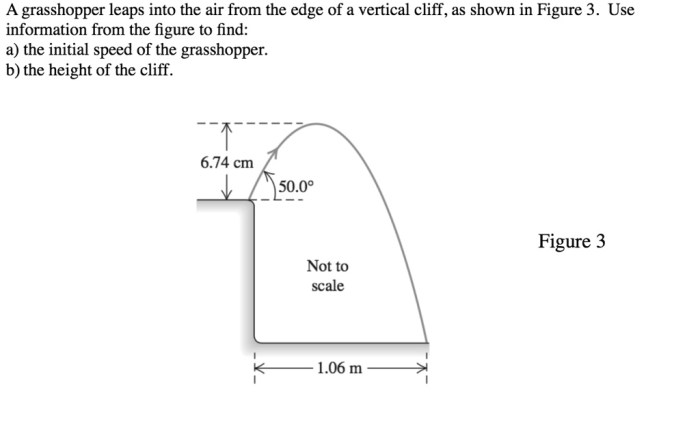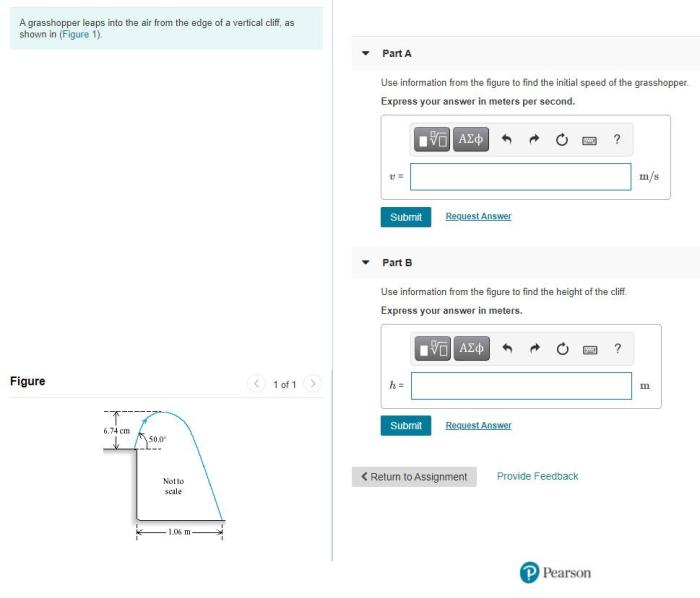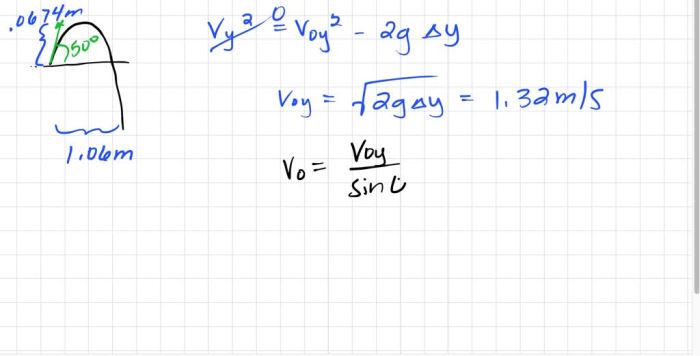A grasshopper leaps into the air, an act that epitomizes the marvels of nature’s design. This remarkable feat, a testament to the grasshopper’s unique adaptations, propels it into the air with astonishing agility. This narrative delves into the intricacies of grasshopper leaps, exploring their biological underpinnings, mechanical principles, and ecological significance.
From the muscular structure that empowers their jumps to the aerodynamics that shape their flight, we uncover the secrets behind these aerial virtuosos. Grasshoppers’ leaps are not merely a means of locomotion but a complex interplay of biology, physics, and behavior, with profound implications for their survival and interactions within the ecosystem.
Biological Characteristics of Grasshoppers

Grasshoppers, belonging to the order Orthoptera, are renowned for their remarkable leaping abilities. These insects possess unique physical adaptations that enable them to propel themselves into the air with astonishing force and precision.
Muscular Structure and Leg Anatomy
Grasshoppers have a robust muscular system, particularly in their hind legs, which are responsible for jumping. The muscles are arranged in antagonistic pairs, allowing for powerful contractions and extensions. The hind legs are elongated and feature specialized joints that facilitate efficient energy transfer during the leap.
The femur, the longest segment of the hind leg, acts as a lever, amplifying the force generated by the muscles.
Jumping Mechanism
The grasshopper’s jumping mechanism involves a rapid extension of the hind legs. The muscles contract, pulling the femur forward and causing the leg to straighten. This sudden movement releases the stored energy, propelling the grasshopper into the air. The grasshopper’s exoskeleton, a rigid outer covering, provides support and stability during the jump.
Energy Storage and Exoskeleton
Grasshoppers have a specialized energy storage mechanism called resilin. This elastic protein is found in the cuticle of the exoskeleton and stores energy during the leg’s extension. When the muscles relax, the resilin releases this stored energy, contributing to the explosive force of the jump.
The exoskeleton also provides protection and prevents muscle damage during the powerful contractions.
Leap Mechanics and Aerodynamics

Grasshoppers possess an extraordinary leaping ability, enabled by a unique combination of muscle power and aerodynamic principles. Their hind legs act as powerful springs, propelling them into the air with remarkable force.
Sequence of Events, A grasshopper leaps into the air
A grasshopper’s leap involves a precisely coordinated sequence of events:
Hindleg Extension
The grasshopper extends its hind legs backward, storing elastic energy in its muscles.
Muscle Contraction
Powerful muscles contract rapidly, releasing the stored energy and propelling the grasshopper forward.
Take-off
The grasshopper launches into the air, generating thrust from the sudden extension of its legs.
Forces Involved
The jump is governed by several forces:
Thrust
The force generated by the grasshopper’s hind legs during contraction, propelling it upward.
Drag
The air resistance encountered by the grasshopper’s body as it moves through the air, opposing its motion.
Gravity
The downward force pulling the grasshopper toward the ground, influencing its trajectory and height.
Air Resistance and Body Orientation
Air resistance plays a crucial role in grasshopper leaps. The grasshopper’s body is streamlined, reducing drag and maximizing efficiency. Its wings, when extended, further reduce air resistance and enhance lift. The grasshopper also adjusts its body orientation during the jump to minimize drag and maximize thrust.
Behavioral and Ecological Implications of Leaping: A Grasshopper Leaps Into The Air

Grasshoppers, known for their impressive leaping abilities, utilize this behavior for various reasons that significantly impact their survival and ecological interactions. Leaping serves as a crucial survival strategy, enabling grasshoppers to evade predators, attract mates, and acquire resources. However, it also comes with certain disadvantages that can affect their population dynamics and community interactions.
Predator Avoidance
Leaping is a primary defense mechanism for grasshoppers against predators. When threatened, they can launch themselves into the air with remarkable speed and distance, often escaping the clutches of pursuing predators. This behavior allows them to avoid capture and survive to reproduce, contributing to the continuation of their species.
Mate Attraction
In some grasshopper species, males engage in elaborate leaping displays to attract females. These displays involve specific leaping patterns, accompanied by sound production or visual cues. By showcasing their leaping prowess, males demonstrate their fitness and agility, increasing their chances of attracting a mate and passing on their genes.
Resource Acquisition
Grasshoppers also utilize leaping to access food and other resources. They can leap to reach distant vegetation, flowers, or water sources, expanding their foraging range and increasing their chances of finding sustenance. Leaping enables them to exploit a wider variety of resources, enhancing their survival and reproductive success.
Cultural and Historical Significance of Grasshopper Leaps

Grasshopper leaps have captured the human imagination for centuries, inspiring cultural references, folklore, and artistic expressions. These leaps have been used to symbolize various concepts, from hope and resilience to agility and freedom.
In Literature and Art
Grasshoppers appear in numerous literary works, often representing agility, movement, and transformation. In the fable “The Ant and the Grasshopper,” the grasshopper’s carefree leaps contrast with the ant’s industriousness. In art, grasshoppers have been depicted in paintings, sculptures, and jewelry, symbolizing vitality and the ephemeral nature of life.
In Music and Folklore
Grasshopper leaps have also inspired musical compositions. The “Grasshopper Dance” is a traditional dance performed by Native American tribes, mimicking the insect’s movements. In folklore, grasshoppers are often associated with good luck and prosperity. In some cultures, it is believed that seeing a grasshopper jump brings fortune.
Historical Significance
Grasshopper leaps have also played a role in human history. The ancient Egyptians believed that the grasshopper represented the god Horus, associated with the sun and protection. In some cultures, grasshoppers were used as a food source, and their leaps were an indication of their freshness.
Grasshopper leaps have also been used as a unit of measurement in some cultures.
Technological Inspirations from Grasshopper Leaps

Grasshopper leaps have captivated engineers and scientists due to their remarkable efficiency and agility. The unique mechanisms employed by grasshoppers during jumping have inspired numerous biomimetic applications, leading to advancements in robotics, prosthetics, and other technological fields.
Engineering and Biomimetic Applications
The rapid acceleration and energy storage capabilities of grasshopper leaps have influenced the design of robots. Researchers have developed robotic systems that mimic the grasshopper’s jumping mechanism, enabling them to navigate challenging terrains and perform complex tasks. These robots can overcome obstacles, jump over gaps, and even climb walls, demonstrating the versatility of grasshopper-inspired designs.Furthermore,
grasshopper leaps have inspired the development of advanced prosthetics. By studying the grasshopper’s leg muscles and tendons, engineers have created prosthetic limbs that allow amputees to move with greater agility and control. These prosthetics replicate the grasshopper’s ability to store and release energy, providing users with enhanced mobility and independence.
Potential Future Applications
The potential applications of grasshopper leap technology extend beyond robotics and prosthetics. Researchers are exploring the use of grasshopper-inspired designs in energy harvesting devices. By mimicking the grasshopper’s ability to store and release energy efficiently, these devices could generate electricity from various sources, such as vibrations or wind.
Additionally, grasshopper leap technology could inspire the development of novel sensors and actuators, enabling advancements in fields such as medical diagnostics and precision engineering.In summary, grasshopper leaps have served as a rich source of inspiration for engineering and biomimetic applications.
The unique mechanisms employed by grasshoppers during jumping have led to advancements in robotics, prosthetics, and other technological fields. As research continues, the potential applications of grasshopper leap technology are expected to expand even further, contributing to the development of innovative and efficient solutions in various industries.
Questions Often Asked
How high can grasshoppers jump?
The height of a grasshopper’s jump varies depending on species, but some can reach heights of several times their body length.
What is the purpose of grasshopper leaps?
Grasshoppers leap for various reasons, including predator avoidance, mate attraction, and accessing food sources.
How do grasshoppers generate the power for their leaps?
Grasshoppers store energy in their exoskeleton and release it rapidly through powerful leg muscles, propelling them into the air.
